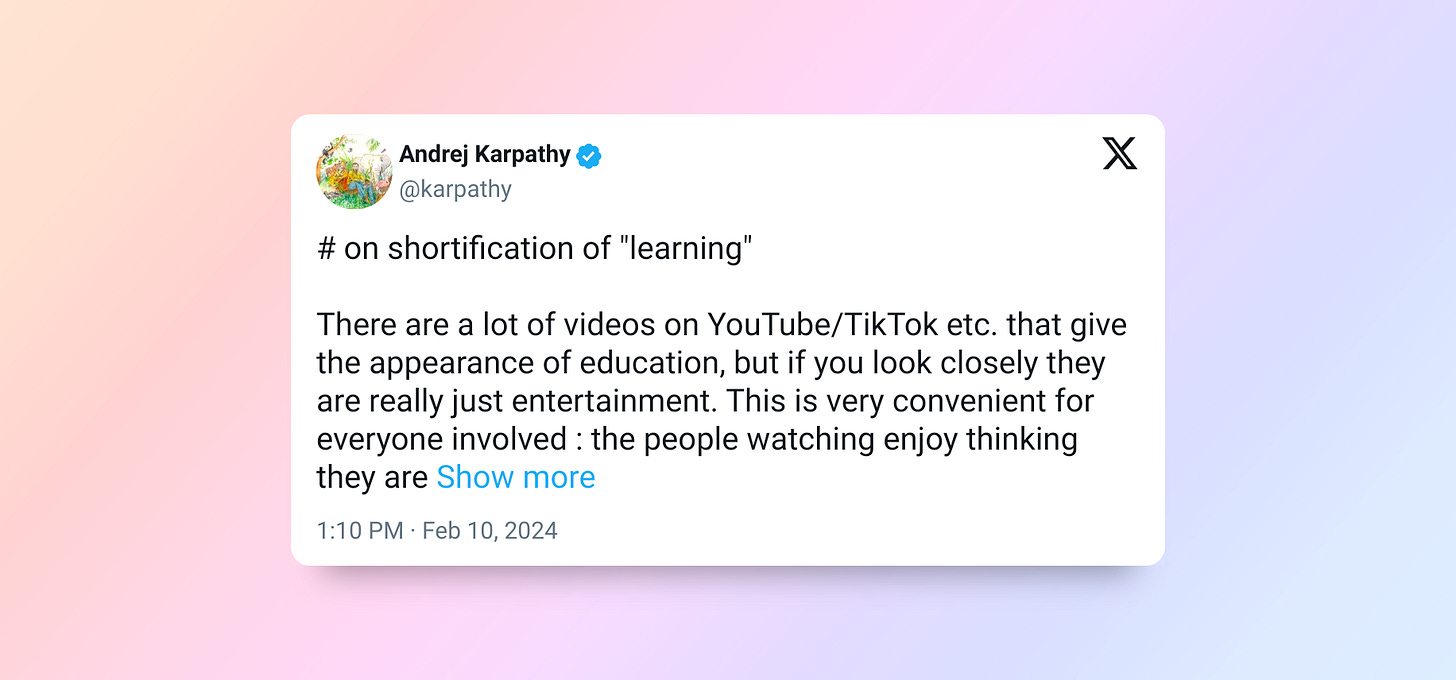How to use AI to actually learn
Using tools like NotebookLM can supercharge how fast you learn new things
Learning new skills or technologies quickly is practically a job requirement in tech. I’m constantly looking for ways to speedrun learning without sacrificing depth. (Case in point: I’m currently juggling a full-time job and a part-time Master’s in Computer Science) With limited hours in the day, I’ve had to get tactical about how I learn. Modern AI tools have become my secret weapon for accelerating the process, and I’m excited to share some details.
In this guide, I’ll share how I leverage AI to genuinely learn faster and better. I’ll focus on combining old-fashioned effort (yes, you still have to put in the work) with AI capabilities to make that effort more efficient and focused. I’ll walk through concrete examples of picking up a new (to me) programming language (Python) and a web framework (FastAPI) using AI assistance.
Along the way, I’ll touch on tools like ChatGPT’s new Study Mode, Google’s NotebookLM, and other techniques that turn AI into a personalized tutor or coding buddy.
If you’re an engineer (or any curious learner) who wants to learn how to learn more effectively with AI, this is for you.
The AI-augmented learning mindset
AI can massively accelerate learning, but it isn’t a magic pill. You can’t just have ChatGPT shove knowledge into your brain. In fact, one of my favorite AI researchers, Andrej Karpathy, recently warned against the trap of “shortification” of learning: the idea that bite-sized videos or cheat-sheet answers can replace real study. He notes that bingeing slick 60-second TikTok explainers might give the illusion of learning, but true mastery of anything worthwhile “takes time and focused mental effort.” As he puts it, learning isn’t supposed to be effortless entertainment. In other words, if it’s too fun or easy all the time, you’re probably skimming the surface. Real learning often feels like work – engaging, rewarding work, but work nonetheless.
That doesn’t mean learning must be joyless. It’s fine if you enjoy the process, and you certainly should leverage engaging resources, just don’t confuse watching entertaining content with doing the hard exercises your brain needs. My rule of thumb (inspired by Karpathy’s advice) is to be intentional. It also helps to schedule dedicated learning blocks Karpathy suggests even a 4-hour window for serious learning which is about right for me.
Finally, embrace an active learning approach. This means engaging with material by doing things: ask questions, solve problems, recall information from memory, and apply what you’re learning as soon as possible. Passive reading or listening has its place (especially for getting initial exposure), but you’ll retain so much more by actively working with the knowledge. AI tools can facilitate this by quizzing you, debugging your attempts, or simulating interactive scenarios, but you have to take the initiative to use them that way.
AI tools that supercharge learning
Let’s talk about the AI tools and features that can turn a solo learning session into something more powerful. Here are some of my go-to tools and how to use them effectively:



